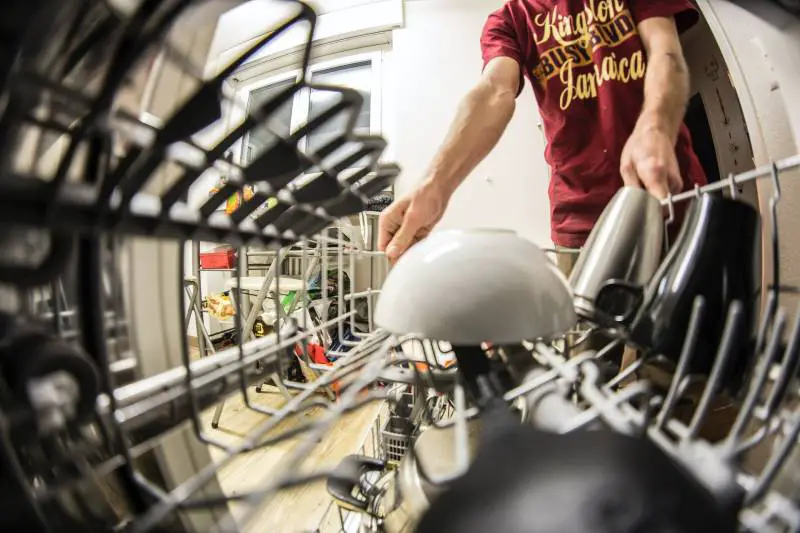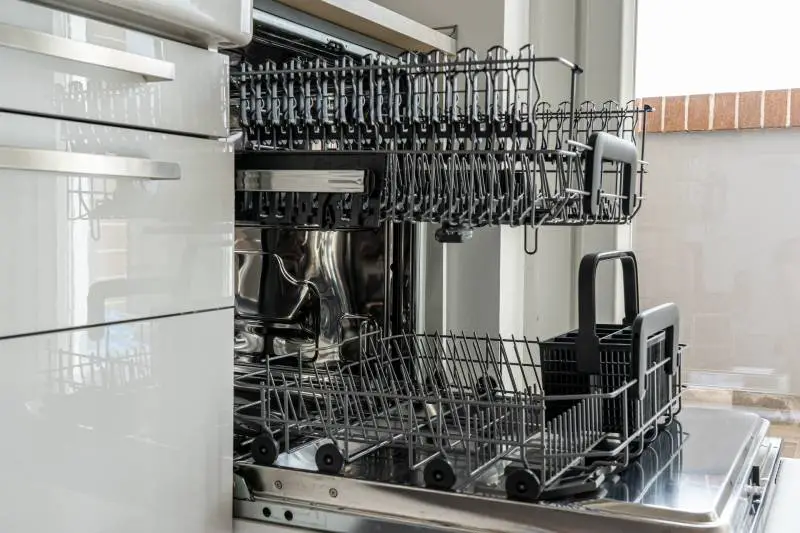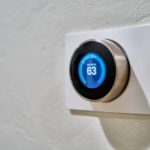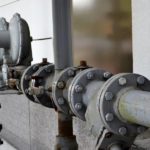Table of Contents
KitchenAid Dishwashers not filling with water can be a frustrating ordeal to face during heavy kitchen duties. Most homeowners love to keep a clean kitchen with clean utensils and appliances.
Thus, they need a well-functioning KitchenAid dishwasher to keep their passion for cleaning the kitchen utensils and appliances.

Nonetheless, you don’t have to be too concerned if your dishwasher does not fill with water. Browse this article to discover some common causes of KitchenAid Dishwasher not filling with water and fix the issue.
Your KitchenAid Dishwasher Not Filling Water May Be Due To:
Door Switch Malfunctioning
If your door switch fails, it may prevent your dishwasher from filling. For the dishwasher to fill properly, the door switch must be operational.
The problem is that when the door is not tightly closed or is not functioning correctly for any reason, it stops the float switch from activating.
The float switch prevents water from overflowing and keeps the appropriate amount constant. This switch does not perform as effectively when the door malfunctions and refuses to close.
As a result, the dishwasher will not fill with water as quickly as you would like.
Carefully examine your door switch to check if some parts of it can be fixed or if you need to change the whole thing.
If you change it with the new one, reinstall the inner panel and reattach the power source to your dishwasher.
Remember to change the fuse or re-energize the circuit breaker. To ensure that your dishwasher is in good operating order, run it via a cycle.
Clogged Water Inlet Valves
A water inlet valve is a gadget that works as a channel, allowing unrestricted water flow into the dishwasher as needed.
The most common cause of water not filling into the dishwasher is a problem with the water inlet valve. To activate the water inlet valve, employ electronic control, also known as a timer.
The water inlet valve prevents water from entering the dishwasher when the electronic control fails or becomes clogged.
Before making any conclusions about your KitchenAid dishwasher, you should inspect the water valve inlet.
The proper procedures of inspecting your water inlet valve are:
- Understand the construction of your KitchenAid dishwasher and identify all the essential areas/parts
- Know where the water inlet valve is placed
- Once you’ve spotted it, dislocate it from the access panel
- Inspect to see any damages, tears, wear, cracks, or any other defect in the water inlet valve.
Unclog The Water Inlet Valve
The water inlet valve is specifically designed to allow water to flow freely into the dishwasher. Water will not flow into the dishwasher if the valve is clogged, broken, or has a maintenance issue.
It is recommended to clear the valve, fix the damaged components, or replace the entire water input valve in this situation.
The good news is that most of this equipment is accessible for purchase both online and in local retailers. That alone should make the procedure easier for those attempting to do it themselves.
Float Switch Malfunction
As previously explained, the float switch must be actuated to prevent water from overflowing the dishwasher; if the button fails, the water valve intake will not open, preventing water from flowing into the dishwasher.
In this situation, there could be something damaged or broken that needs to be repaired right away. Failure to do so may disrupt water flow into your dishwasher, something we do not want.
In this case, disconnecting the dishwasher and checking whether the float switch is working is acceptable.
Typically, the switch is actuated when the float arm rises above the water heater. If there is no problem, check to determine if the wires coming from the float switch are sufficiently tight.
Loose ends are always considered a flaw.

Replace The Float Switch
The float switch regulates the quantity of water coming into the dishwasher to keep it from overflowing.
When the gadget isn’t working properly, it may prohibit water from entering the dishwasher. If the device is faulty or broken, it is best to fix or replace it as soon as possible.
Drain Solenoid Malfunction
The drain solenoid is a crucial component of your dishwasher. This gadget controls the drain valve of your dishwasher.
The dishwasher drain valve will also fail if this drain solenoid malfunctions. As a result, inspect the drain solenoid since it impacts the dishwasher drain valve’s operation.
Consider repairing or replacing the equipment if it is broken or damaged. If you opt to replace it, be sure that you receive the original manufacturer’s equipment.
To avoid repeating problems, you should purchase only genuine equipment.
Inefficient Water Supply
There may be complications with the water supply through the water valve inlets from time to time. If they become clogged, the water pressure may drop dramatically, resulting in little or no water supply.
As a result, ensure that you verify the linked components of the water supply system to ensure that everything is attached correctly.
If not, make sure to tie up any loose ends, clear out any clogs, and put items back in their correct places. It will allow the water to run freely and fill the dishwasher.
How To Fix It
Problems with your dishwasher may be easier to solve than you think. When your dishwasher begins to malfunction, you should first review the water supply system.
Poor water supply is a widespread condition for systems that have been in place for a long time. It is due to calcifications that settle in water supply valves and the thinner filter screen, eventually obstructing the water inlet valve.
When this develops, the water pressure usually drops, limiting the amount of water that may enter the dishwasher.
The conventional pressure for water flowing through the water inlet valve is 20 psi. Anything less than that impedes the smooth flow of water into the dishwasher.
Before consulting a plumber, check to see if there are any problems with the water supply system. If there are any, try unclogging the water inlet valves and seeing if that solves the problem.
Buy Appliances From Reliable Dealers
The quality of the appliance can sometimes be the most significant issue causing your dishwasher to run inefficiently.
Always buy from reputable merchants who are renowned for selling high-quality equipment. You can get recommendations from friends or family, research on the internet, read reviews from websites, and so on.
Furthermore, look for sellers who offer warranties and guarantees if the appliances fail to perform as expected. You can always request an exchange or a refund this way.
KitchenAid Dishwasher Not Filling With Water – Conclusion
All of the triggers mentioned above variables could explain why your dishwasher does not fill with water.
However, these may not be the causes of your KitchenAid dishwasher malfunction – there are many more things to look into.
Without a doubt, the most praiseworthy action to take will be to hire expert services such as a plumber for dependable solutions.
Because not everyone can do it themselves, it is advisable to employ professional services to ensure correct execution.
Rather than exacerbating the situation, consider contacting a plumber for immediate assistance. The cause of your issue can be something beyond what we have discussed above; therefore, a plumber should be of great help.






![It Sounds Like Water Constantly Running In House [Causes] It Sounds Like Water Constantly Running In House [Causes]](https://homesteadandprepper.com/wp-content/uploads/2021/04/why-does-it-sound-like-water-is-constantly-running-in-my-house-150x150.jpg)

